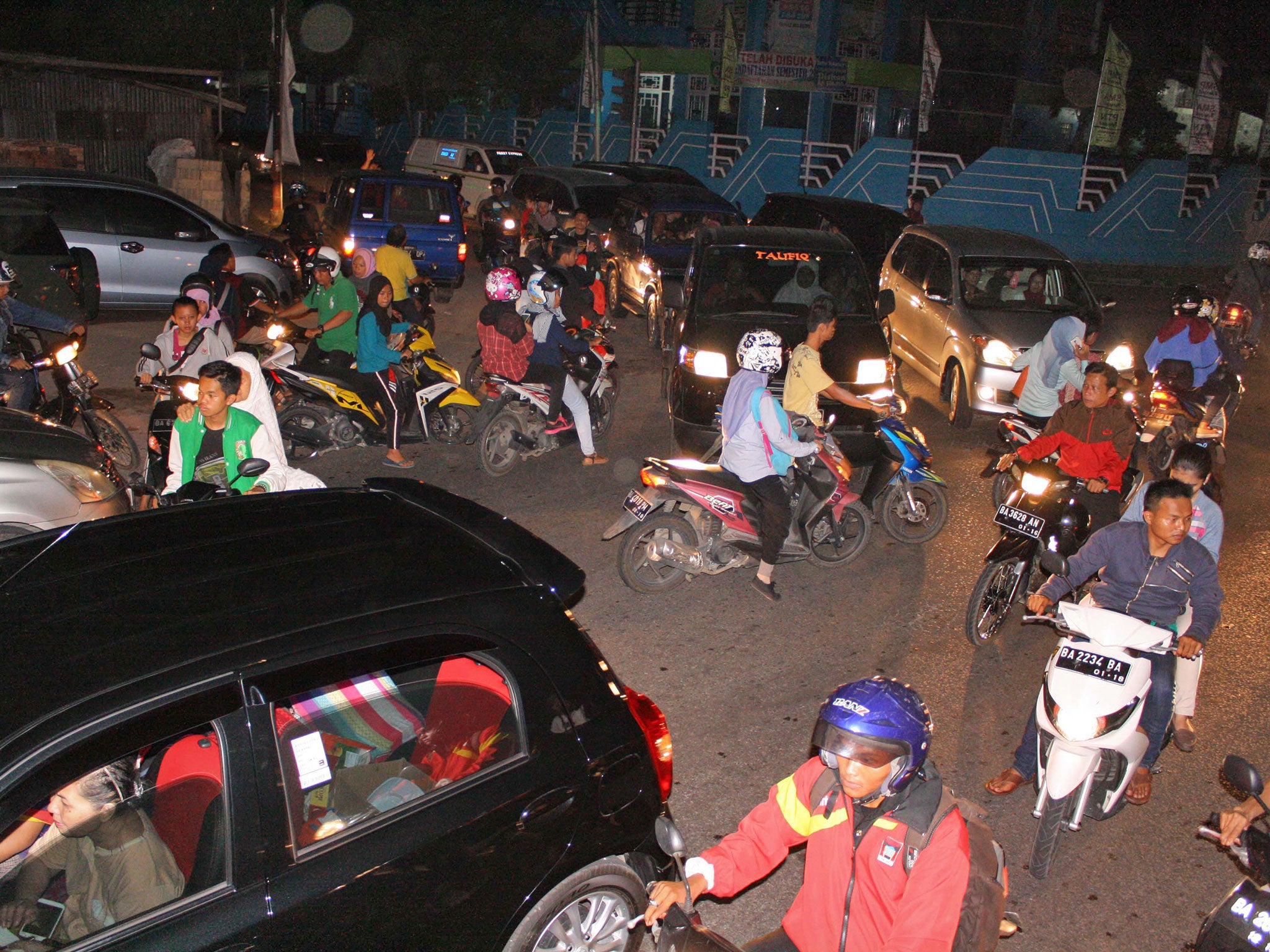Indonesia earthquake: Tsunami early warning bouys were all inoperable as 7.8 magnitude tremor struck
The incident sparked panic on Sumatra island and further afield – and exposes major gaps in safety measures in the Indian Ocean

Every single one of Indonesia’s tsunami early warning buoys was inoperable at the time the 7.8-magnitude earthquake struck off the coast on Wednesday night, it has emerged.
In the event, the massive, shallow tremor some 600km off Sumatra island did not generate a tsunami and there were no reports of deaths or major damage.
But the incident has raised serious concerns around the early warning system that was put in place in the wake of the 2004 tsunami, one of the deadliest natural disasters in modern times.
An official at the National Disaster Mitigation Agency (NDMA) in Indonesia told the Reuters news agency that all 22 buoys designed to warn of an impending tsunami were offline.
They are part of a sophisticated but expensive system put in place after more than 200,000 people died 11 years ago – yet have not been operational for at least a year.
The buoys, which measure the force and speed of water movement, cost around £1.6 million a year to maintain, and NDMA spokesman Sutopo Purwo Nugroho told reporters: “Most of (the buoys) were broken by vandalism.
“We can easily forget. After the quake in Aceh we wanted to do everything, but by 2015 we don't have money allocated [to fix them].”
The biggest earthquakes in the world since 1900
Show all 10Separately, concerns were also raised on Sumatra itself that there were not enough evacuation routes or shelters in Padang, a Sumatra island port city of around one million people that felt the quake.
“There was definitely panic last night, that cannot be denied,” said Zulfiatno, the head of disaster management agency in Padang who uses only one name, adding that shelters had the capacity to only hold around 200,000 people.
The inoperable buoys are thought to have contributed to the panic, because the tsunami alerts went on much longer than necessary until it could be confirmed waves were acting normally.
Officials nonetheless hailed the success of the procedure to issue a warning when a quake of more than 6.5 magnitude and with its epicentre less than 20 km (12 miles) deep happens at sea.
Fears ran high on Wednesday evening when it was reported that the tremor had measured 8.2 and authorities issued evacuation alerts on loudspeakers, radio and TV. Patients at hospitals in Padang were evacuated and there were traffic jams as panicking residents tried to leave.
It was two hours before tsunami warnings were cancelled, while the US Geological Survey (USGS) revised the magnitude down to 7.8. Initial reports from search and rescue officials that the earthquake caused “some deaths” were scotched at first light on Thursday, when the damage could be assessed fully.
Additional reporting by agencies
Subscribe to Independent Premium to bookmark this article
Want to bookmark your favourite articles and stories to read or reference later? Start your Independent Premium subscription today.

Join our commenting forum
Join thought-provoking conversations, follow other Independent readers and see their replies